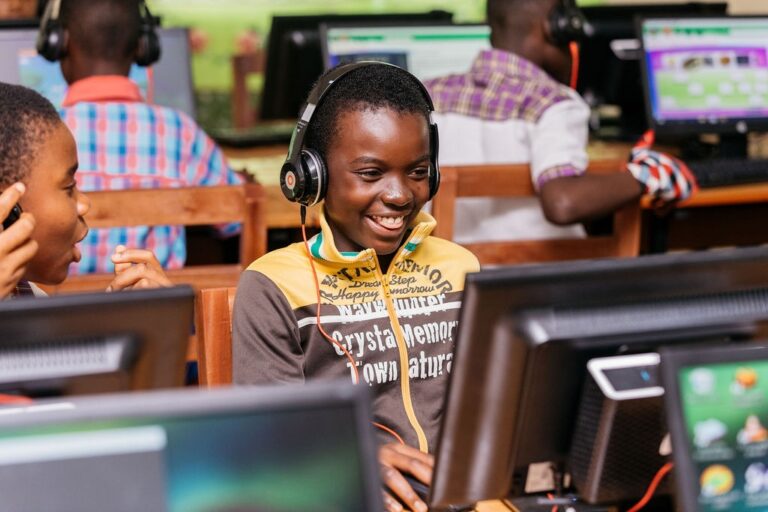By BEN DICKSON | 31 January, 2018
education to people across the world. Cloud applications helped us create classrooms that defy geographical barriers and span across thousands of miles. Artificial intelligence and machine learning helped make up for the shortage of teaching talent by providing tools that assist students in learning and augment the ability of teachers.
Blockchain is the technology driving the next revolution in education by removing institutional and financial barriers. This is the idea behind On-Demand Education Marketplace (ODEM), a platform that aims to provide learners and teachers with a flexible educational hub where they can directly connect, plan and confirm in-person courses.
Lower fees, bigger wages
ODEM uses blockchain, the distributed ledger technology that enables operations and exchange of digital assets without the need for gatekeepers and intermediaries. Blockchain enables ODEM to remove institutions that stand between students and teachers.
Removing institutions from the loop will reduce intermediary fees considerably, which means students will pay less for their education and teachers will earn more. But more importantly, there won’t be any party to impose rules on how teachers can share their knowledge and expertise, and how students can join an educational program. This is especially important when you globalize education, because many learners can’t conform to the requirements imposed by higher educational institutions in other countries.
The result is a gig economy of the sharing of knowledge, the purpose behind the name of ODEM. Students can place requests for specific courses and teachers can directly respond to those requests. This can be anything such as a short introductory session about quantum physics or a complete months-long class about object-oriented programming. ODEM can arrange both online and in-person courses.
This model can solve one of the problems lying ahead as technological developments continue to transform our world. As the automation of human labor picks pace, old education models might no longer be able to respond to the needs of constantly changing economies.
For instance, by the time you earn a four-year higher education degree, much of the knowledge and skills you acquire might have become obsolete because advances in artificial intelligence might have automated a huge chunk of the work you’re learning to do. We’ll be needing models that will enable people to learn in small and quick increments. The on-demand market might provide a good basis for fulfilling this requirement.
Turning courses into smart contracts
ODEM has a large database of courses and requests that students and teachers can browse to find the item they need. This database is stored on its own servers to optimize speed and accessibility. The platform uses artificial intelligence algorithms to quickly peruse the data and find the best solution for each user.
However, once students and teachers reach the stage where they want to coordinate course terms and payment terms, ODEM uses smart contracts, software that runs on blockchain and obviates the need for centralized application servers.
Every course becomes a smart contract. At the beginning of the course, students deposit payments from their ODEM wallet to the smart contract. After the course is completed (or based on the agreed terms) the smart contract automatically releases funds to the wallet of the teacher. Every completed course and payment transaction is stored on the blockchain with minimal fees involved.
Without educational institutions standing in the middle, ODEM will need a mechanism to make sure students receive the quality education they deserve. This is where blockchain’s transparency can help. Blockchain records are immutable and public, which serves as certification for students and teachers. Students earn an undeniable proof of having passed a class while teachers earn and credibility from the courses they perform on the platform, all transparently available on the blockchain. Blockchain also prevents the creation of forged documents and certificates and gives students and third-party auditors a chance to review the background of instructors.
The ODEMT token
Users will be able to access the ODEM platform using the ODEMT token. An open-source network, named Stellar, is used for cross-border payments. Stellar facilitates the integration of various fiat and digital currencies into the system, making the system available to audiences from all regions. It will make it easier for ODEM users to buy ODEMT tokens once the platform launches.
ODEM will be launching its initial coin offering (ICO) on February 17th, where pre-registered users will be able to purchase ODEMT tokens. The company will start a vetting and KYC process for registered users starting this Friday.
Gaining support from educational establishments
In building and launching its platform, ODEM will be partnering with Excelorators, a provider of education services to overseas students, executives and managers seeking exposure to America’s elite learning institutions and corporate campuses. Excelorators will help ODEM with much-needed experience and resources to gain traction in this new field.
In an interview with The Drum, ODEM CEO Richard Maaghul said, “We’re strapping blockchain technology on Excelorators’ network of more than 200 professors at top universities. By reducing the role of intermediaries, we strengthen the relationship between those professors and students. Both sides of the equation have more power to affect positive educational outcomes.”
Given that ODEM’s business model threatens the $4-6 trillion global empire that traditional higher educational institutions have established, it will be a while before we can expect large universities to support the platform. But then again, banks and financial institutions initially spurned cryptocurrencies and blockchain, but endorsed them when it became obvious that the technology was here to stay. The education industry might be bound for a similar transformation.



![[Preliminary Report] CRNA Collaborative Research for Exploring Factors Nurturing"Happy and Resilient" Children among Asian Countries](https://equity-ed.net/wp-content/uploads/2024/09/1725672182698.jpg)


